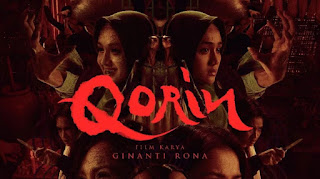Uzumaki (2000) - Asian Horror Movie Review
Welcome to Sensei Sensibility! You are the hungry mind yearning to devour Asian horror cinema; I am the (questionably) knowledgeable Sensei, more than happy to satiate your cinematic appetite.
Junji Ito's iconic Uzumaki - does the 2000 Higuchinsky film adaptation do it any justice or should the oeuvres of Ito just be left the hell alone, in a book, where they belong?
I love Junji Ito and I want everyone in the world to revere his genius. Surely the endless film and anime adaptations are a sign that others agree with me, right?
Yes, but as I said in my recent review of Nagaiyume, the intricate and nightmarish works of Ito rarely translate well off of the page. Considering their often cosmic and other-worldly style, how can they possibly be replicated in the flesh?
Let's break it down.
It's safe to say that we're all familiar by now with the basic premise of Uzumaki. Sweet young schoolgirl Kirie (Eriko Hatsune) and her gloomy boyfriend Shuichi (played by the striking Fhi Fan) struggle to survive as the rest of their small, rural village (Kurouzu-cho) succumb to a bizarre curse. The denizens of Kurouzu-cho are under the spell of "the vortex." Or spiral, if you will.
Be it the whirling stripes of a barber's pole sign, the swirl of the snail's shell or the delicate whorls of your fingerprint - the hypnotic pull of the uzumaki is too strong for the citizens to resist. One by one, they all fall victim to a strange obsession that kills them in increasingly grotesque and unbelievable ways; the Lovecraftian history of the town being revealed bit by bit before the manga's fantastical end.
From the cyclopean towers of spiralling hair in the chapter "Medusa"; the twisted death of Shuichi's father (the one and only Ren Osugi.); the vomit-inducing transformation of young teens into larger than life-size snails. And, the myriad of other inventive body horrors that befall the characters - how well does Higuchinsky represent the original text?
Funnily enough, pretty damn faithfully.
While he took creative liberties with his direction of Nagaiyume, here Higuchinsky eschews trying to adapt the manga for the big screen, but literally puts a manga... on screen.
Breaking the film up into four sections "Premonition, Erosion, Invasion, and Transmigration" he takes the story to about halfway through the epic tome that is Uzumaki.
The character make-up and costuming are hideously accurate for their manga counterparts. The character's unnatural speech and movement patterns replicate a stilted comic book style which leads to odd interactions and dialogue among the actors. The main characters often pass by completely still, unblinking background characters, oblivious to the fact that that is not normal.
While some may initially view this as a bad script with wooden acting, it's actually a bold creative decision that heightens the film's weird atmosphere.
A mysterious, ethereal organ score reminiscent of carnival music blares throughout the film, highlighting the freak show feel. I was particularly impressed with the unusual and inventive camera work, angles and dizzying cinematography. Higuchinsky does a great job of portraying the madness from the original work and brilliantly builds tension for some incredibly bonkers death scenes.
Most of the book's notorious "kills" are there and while yes, some of them do look absolutely ridiculous - a lot of it is done really well for its time and obvious low budget. Cleverly executed animated stills fill in the blanks for any scenes just too Avant Garde for human reconstruction.
Most notably absent from the film is Azami Kurotani from the chapter "The Scar". Yes, her particular manifestation the uzumaki curse would have been challenging to recreate but considering her spirally forehead has become possibly the most iconic image representing the franchise, it's disappointing that they didn't even allude to her.
That being said, I cringed badly at the chapter about Katsuyama and his transformation into the human snail ("Hitomaimais"), yet here on screen it was one of the darkly funniest scenes. The comedy was heightened by Katsuyama's attractive bully Tsumura, who was wonderfully textbook 90s high-school bad guy.While Ito uses galactic Lovecraftian-esque cosmic lore to "explain" the unexplainable ending, Higuchinsky opts for or the ancient Shinto mythological snake cult explanation. (Naturally.)
I know there's re-mastered Blu-ray editions of this movie out there, somewhere. But I honestly feel that the poorly subbed, grainy version on YouTube provides the most authentic noughties J-horror vibe to the whole experience.
This interpretation of Junji Ito's greatest masterpiece won't be to everyone's taste, but as a curiosity for a die-hard fan, I encourage you to "Be a vortex too".
Let's keep the spooky chat going on:








Comments
Post a Comment